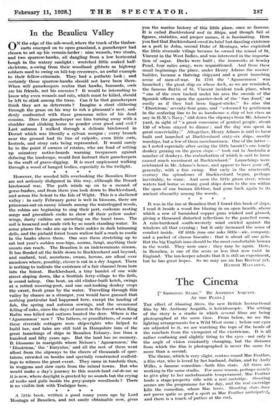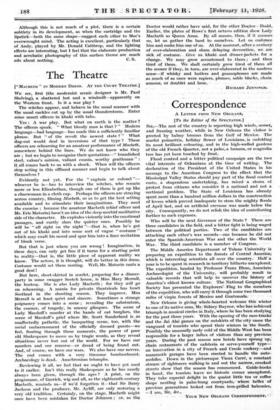The Cinema
[" SHOOTING STARS." BY ANTHONY ASQUITH.
AT THE PLAZA.]
THE effect of Shooting Stars, the new British Instructional film by Mr. Anthony Asquith, is kaleidoscopic. The setting of the story is a studio in which several films are being photographed at the same time. From below, we sec the lighting arrangements for a Wild West scene ; before our eyes are adjusted to it, we are watching the tops of the heads of the ranchers from the viewpoint of the electrician. It is all rather confusing and slightly tiring to the eyes—not only is the angle of vision constantly changing, but the distance from which the film is photographed is never the same for more than a second.
The theme, which is very slight, centres round Mae Feather, a film star, who is loved by her husband, Julian, and by Andy Wilks, a famous comedian—both film stars. All three arc working in the same studio. For some reason, perhaps merely to give play to her melodramatic temperament, Mae Feather loads a stage-property rifle with a real cartridge. Shooting scenes are the programme for the day, and the real cartridge kills the comedian, whom Mae loves. Shooting stars does not prove quite so good a sport as Mae Feather anticipated, and there is a touch of pathos at the end.
Although this is not much of a plot, there is a certain subtlety in its development, as when the cartridge and the lipstick—both the same shape—suggest each other to Mae's overwrought mind. The acting is excellent, particularly that of Andy, played by Mr. Donald Calthrop, and the lighting effects are interesting, but I feel that the elaborate production and acrobatic photography of this surface theme are much







































 Previous page
Previous page